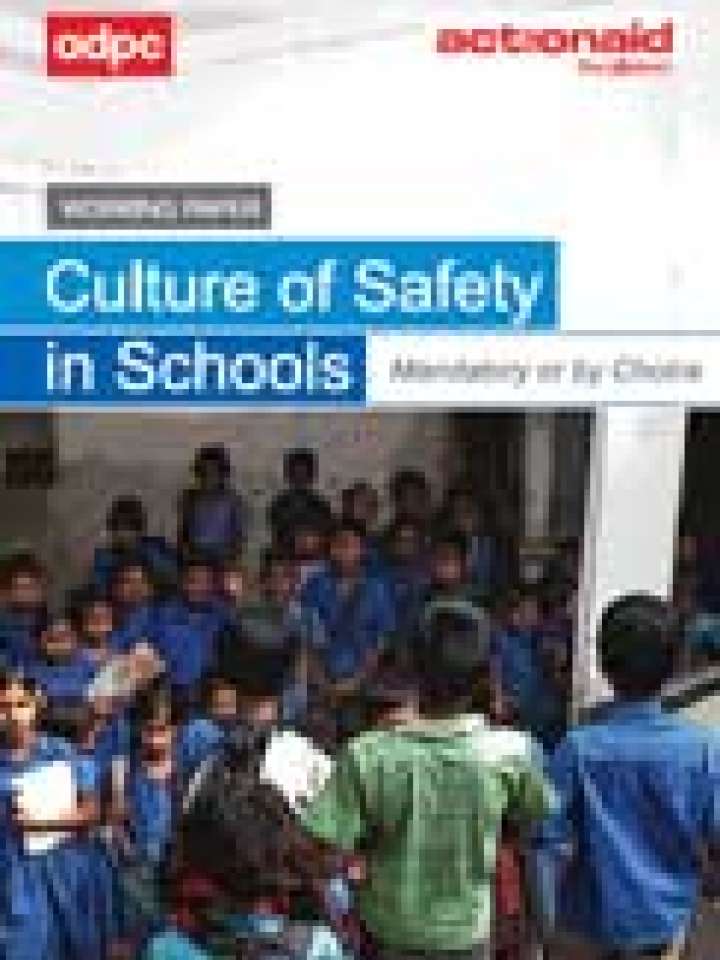Working paper: culture of safety in schools - mandatory or by choice
This research work is an attempt to define a culture of safety in schools and develop a framework to highlight the linkage between child rights and disaster risk reduction (DRR). It also aims to investigate how to understand the global initiatives on school safety and way forward for Bangladesh.
The research undertaken develops the indicators of a culture of safety in terms of safety audits, safer construction and education in emergencies. Finally, this publication is the result of moving towards the realization of the Hyogo Framework for Action (HFA) and understanding how a culture of school safety in Bangladesh can contribute to the implementation of the HFA priorities of action.
About the Research, from the authors:
School safety and preparedness is still in the form of choice not as a mandatory requirement for schools in Bangladesh. DRR and education programs must reflect the coherence in terms of reducing the disaster impacts in education sector. Countries like Belize, Iran, Sri Lanka have gone far ahead in institutional commitment. After the Bam (Iran) earthquake, central government passed the School Safety Act of 2006 in the parliament. Belize also has gone mile ahead in bringing the school safety policy into place to protect children from hurricanes. In Sri Lanka, the government has developed a national guideline towards making disaster safe schools. Cambodia, Lao PDR and the Philippines have brought the priority implementation partnerships to mainstream disaster risk reduction into education sector. Ministry of Education in Turkey has made evacuation drills mandatory in all the schools.
The realization of this research work came after the field visit to Action Aid Bangladesh's working area in Chittagong and ADPC's work under the Comprehensive Disaster Management Program (CDMP) and under DIPECHO with Islamic Relief and Plan Bangladesh. ADPC's training and advocacy component under CDMP was focused on School Safety on Earthquakes where Dhaka, Sylhet and Chittagong cities were intervened to create awareness among schools and education authorities. Discussions with teachers, students, school management committees, and education authorities were made to understand how schools manage students in terms of protecting their lives during school hours. It was found that schools do practice symbolically in terms of safety measures, but there is lack of understanding by the school authorities about the potential threat to the children. In the absence of government regulation on safety and audit measures, school management committee (SMC) does take very little initiatives to ensure the safety of the children. Realizing the impact of disasters (natural and human made) and absence of safety and audit measures in schools, this research intends to investigate and advocate, how a culture of safety can be practiced or adopted to enable a safer environment (internal and external) for future of Bangladesh, i.e. children, instead of making safety and preparedness, a choice.
Explore further
